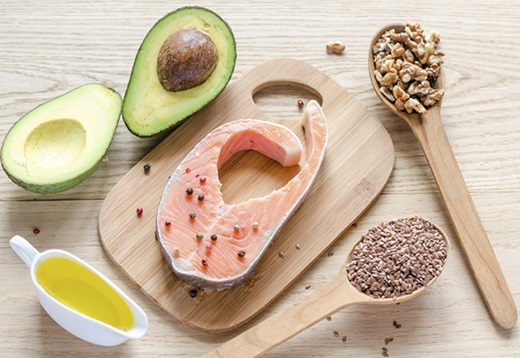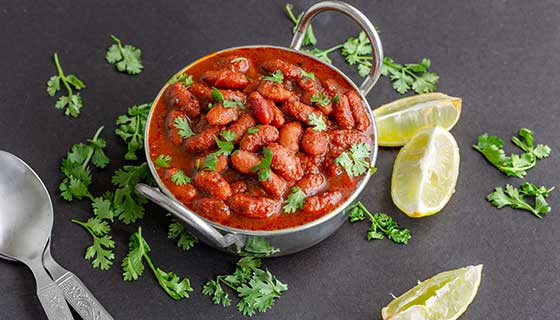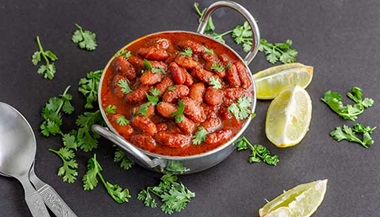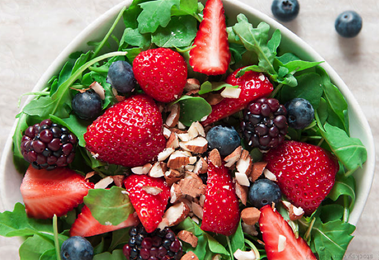Fats and Your Food: Striking a Heart-Smart Balance
Fat has become a bad word in heart health, but it’s more complicated than that. While it’s true that carrying extra body fat is bad for you, the types of fats that come from different foods in the diet are not all the same. Your body needs dietary fats in order to function. And the new thinking is that trying to cut out all fats from your diet may actually be contributing to obesity.

“There’s been a big shift in thinking about what makes a healthy diet,” says Kerry Stewart, Ed.D. , a professor of medicine in the cardiology division at The Johns Hopkins University. Research at Johns Hopkins and elsewhere shows that cutting out dietary fat alone doesn’t have much of an impact on reducing cholesterol levels. “People need fat, carbohydrates and protein—the major macronutrients—for good, balanced health,” Stewart says.
One key to heart health is the type of fat you eat. All fats contain the same number of calories—9 calories per gram. But the three main types have different effects in the body.
A quick guide:
Trans Fats: Just Say No
Red light: Trans fats, also called trans fatty acids, are best avoided because they raise blood low-density lipoprotein (LDL) cholesterol levels—the bad type—and lower high-density lipoprotein (HDL) cholesterol—the good type—which in turn can adversely affect artery structure and function, leading to heart disease, heart attack and stroke. Trans fats are used largely in processed foods to add flavor, texture and a longer shelf life.
Found in: Trans fats are found in baked goods, like cookies, cakes and crackers; pizza crust; fried foods; some microwave popcorn; stick margarine; and vegetable shortening. To identify trans fats, search food labels for the words “partially hydrogenated oils.”
Saturated Fats: Here’s the Skinny
Yellow light: Try to limit saturated fats to less than 10 percent of total daily calories. Found naturally in animal foods, saturated fats can elevate blood cholesterol. When you can, replace solid fats with liquid kinds, which are more likely to be the unsaturated “good” fats—think olive oil instead of butter. Choose low-fat, fat-free or skim varieties of dairy products over full-fat kinds. Pick cuts of meat that have less marbling, and remove skin from poultry.
Found in: Saturated fats are found in fatty meats, including beef, lamb, pork and poultry with skin; and whole, 1 percent or 2 percent milk, or dairy products made with these milks, including cheese, butter and ice cream. Saturated fats, like trans fats, tend to be solid at room temperature rather than liquid. Palm oil and coconut oil also contain saturated fats.
Unsaturated Fats: The Heart-Healthiest Kinds
Green light: It’s best to eat the “good,” or unsaturated, fats. The two main types are polyunsaturated and monounsaturated. These reduce the amount of LDL cholesterol in the blood, which can help lower the risk of heart disease. Polyunsaturated fats also deliver two types of fats that the brain and other parts of the body need but can only be obtained through the diet: omega-3 fatty acids—found in fish—and omega-6 fatty acids—found in nuts and seeds. Bonus: Foods containing unsaturated fats tend to be high in protein.
Found in: Unsaturated fats are found in fish, especially fatty fish like salmon, mackerel, trout and herring; nuts; avocados; vegetable oils, including canola, olive and sunflower; tofu; soybeans; and flaxseed.
Fat has become a bad word in heart health, but it’s more complicated than that. While it’s true that carrying extra body fat is bad for you, the types of fats that come from different foods in the diet are not all the same. Your body needs dietary fats in order to function. And the new thinking is that trying to cut out all fats from your diet may actually be contributing to obesity.
Try It Healthy Cooking Oils
When you cook, swap out saturated fats like butter, lard and shortening—which tend to be solid in form—for healthier unsaturated fats. Good choices include:
- Canola oil (from the seeds of the canola plant)
- Olive oil (from the pressing of olives)
- Peanut oil (from shelled peanuts)
- Sesame oil (from sesame seeds)
- Vegetable oil (from a combination of plants—usually corn, sunflower seeds and soybeans).





